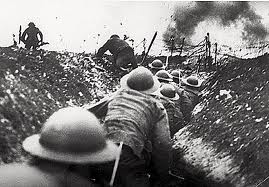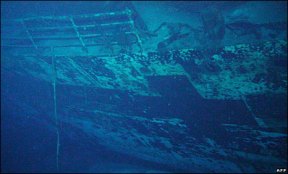Today, April 1st, sees the anniversary of the birth of the Royal Air Force (RAF). The RAF came about from the amalgamation of the Royal Flying Corps and the Royal Naval Air Service and announced in the London Gazette on April 2nd 1918.
“All Officers serving with the Royal Naval Air Service and Royal Flying Corps on the 31st March, 1918, or in connection with those Services in certain Government Departments, in other than the undermentioned capacities, are granted temporary commissions in the Royal Air Force, with effect from the 1st April, 1918, in ranks which will appear in the Royal Air Force List.”
In celebration of this, I thought it pertinent for today’s ‘Hero of The Line’ to be a member of the RAF. But not any old member, no sir. What we have here, if you have a minute, is a proper hero. A pure gold nugget of an airmen, who conquered a fear of flying to become arguably the greatest Allied flying Ace of WW1 and second only to Baron von Richtoffen as the greatest Ace of the war.
So, without further ado, I introduce to you Major Edward Corringham ‘Mick’ Mannock VC, DSO and Two Bars, MC and Bar.
The outbreak of the war found him working as a telephone engineer in Turkey. Those pesky Turks took him prisoner and put him jail, where he suffered very poor health. Knocking on death’s door, he was repatriated and, in 1915, joined the colours. By 1916, he had become an officer in the Royal Engineers and in August 1916 was transferred to the Royal Flying Corps.
After training, he joined No. 40 Squadron but found it difficult at first to settle in. His unease was shown in his flying, to the extent that his colleagues thought he was a coward. He admitted he was scared, but on May 7, he shot down an observation balloon which would prove to be the start of a prolific air career.
By the end of July, Mannock had been awarded the Military Cross (MC) and was a flight commander. On August 12, 1917, he shot down and captured Leutnant Joachim von Bertrab. Both flyers were aces – Mannock had shot down a balloon and four aeroplanes; Bertrab was his sixth “credit”.
He kept flying and conquered his fears, working tirelessly at gunnery practice and forcing himself to get close to the German aeroplanes. After one kill, he coldly described it. “I was only ten yards away from him – on top so I couldn’t miss. A beautifully coloured insect he was – red, blue, green and yellow. I let him have 60 rounds, so there wasn’t much left of him.” His determination, flying skill and sense of teamwork earned him a promotion to Captain and a Bar to his MC in October 1917.
In February 1918, Mannock was appointed flight commander of the newly formed No. 74 Squadron. The squadron was posted to France in March 1918. He continued shooting down Germans, but never hogging credit, letting newer pilots get credit for kills. In three months, he claimed 36 more, bringing his total to 59. He was an excellent patrol leader; he took a very protective attitude toward his fliers and lectured them on survival and success. “Sight your own guns,” he told them, “The armourer doesn’t have to do the fighting.”
Mannock was awarded the Distinguished Service Order in May 1918, and received the Bar to the DSO just two weeks later.
On 26 July, Major Mannock offered to help a new arrival, Lt. D.C. Inglis, obtain his first victory. After shooting down an enemy two-seater behind the German front-line, Mannock is believed to have dived to the crash site to view the wreckage. However, while crossing the trenches, the fighters were met with a massive volley of ground-fire. The engine of Mannock’s aircraft was hit and immediately caught fire and crashed behind German lines.
Mannock’s body was never officially found and he is commemorated on the Royal Flying Corps Memorial to the Missing at the Faubourg d’Amiens CWGC Cemetery in Arras.
A year after his death, he was posthumously awarded the Victoria Cross.
Major Mannock was awarded the undermentioned distinctions for his previous combats in the air in France and Flanders:
- Military Cross. Gazetted 17th September, 1917.
- Bar to Military Cross. Gazetted 18th October, 1917.
- Distinguished Service Order. Gazetted 16th September, 1918.
- Bar to Distinguished Service Order (1st). Gazetted 16th September, 1918.
- Bar to Distinguished Service Order (2nd). Gazetted 3rd August, 1918.
Citation for Military Cross
T./2nd Lt. Edward Mannock, R.E. and R.F.C.
For conspicuous gallantry and devotion to duty. In the course of many combats he has driven off a large number of enemy machines, and has forced down three balloons, showing a very fine offensive spirit and great fearlessness in attacking the enemy at close range and low altitudes under heavy fire from the ground.
Citation for Bar to Military Cross
T./2nd Lt. (T./Capt.) Edward Mannock, M.C., R.E. and R.F.C.
For conspicuous gallantry and devotion to duty. He has destroyed several hostile machines and driven others down out of control. On one occasion he attacked a formation of five enemy machines single-handed and shot one down out of control. On another occasion, while engaged with an enemy machine, he was attacked by two others, one of which he forced to the ground. He has consistently shown great courage and initiative.
Citation for Distinguished Service Order
T./2nd Lt. (T./Capt.) Edward Mannock, M.C., R.E., attd. R.A.F.
For conspicuous gallantry and devotion to duty during recent operations. In seven days, while leading patrols and in general engagements, he destroyed seven enemy machines, bringing his total in all to thirty. His leadership, dash and courage were of the highest order.[13]
Citation for Bar to Distinguished Service Order
T./2nd Lt. (T./Capt.) Edward Mannock, D.S.O., R.E., and R.A.F.
For conspicuous gallantry and devotion to duty. In company with one other scout this officer attacked eight enemy aeroplanes, shooting down one in flames. The next day, when leading his flight, he engaged eight enemy aeroplanes, destroying three himself. The same week he led his patrol against six enemy aeroplanes, shooting down the rear machine, which broke in pieces in the air. The following day he shot down an Albatross two-seater in flames, but later, meeting five scouts, had great difficulty in getting back, his machine being much shot about, but he destroyed one. Two days later, he shot down another two-seater in flames. Eight machines in five days—a fine feat of marksmanship and determination to get to close quarters. As a patrol leader he is unequalled. (D.S.O. gazetted in this Gazette.)
Citation for Second Bar to Distinguished Service Order
Lt. (T./Capt.) Edward Mannock, D.S.O., M.C. (formerly Royal Engineers).
This officer has now accounted for 48 enemy machines. His success is due to wonderful shooting and a determination to get to close quarters; to attain this he displays most skilful leadership and unfailing courage. These characteristics were markedly shown on a recent occasion when he attacked six hostile scouts, three of which he brought down. Later on the same day he attacked a two-seater, which crashed into a tree. (The announcement of award of Distinguished Service Order, and First Bar thereto, will be published in a later Gazette.)
Citation for Victoria Cross
His Majesty the KING has been graciously pleased to approve of the award of the Victoria Cross to the late Captain (acting Major) Edward Mannock, D.S.O., M.C., 85th Squadron Royal Air Force, in recognition of bravery of the first order in Aerial Combat: —
On the 17th June, 1918, he attacked a Halberstadt machine near Armentieres and destroyed it from a height of 8,000 feet [2,400 m].
On the 7th July, 1918, near Doulieu, he attacked and destroyed one Fokker (red-bodied) machine, which went vertically into the ground from a height of 1,500 feet [460 m]. Shortly afterwards he ascended 1,000 feet [300 m] and attacked another Fokker biplane, firing 60 rounds into it, which produced an immediate spin, resulting, it is believed, in a crash.
On the 14th July, 1918, near Merville, he attacked and crashed a Fokker from 7,000 feet, and brought a two-seater down damaged.
On the 19th July, 1918, near Merville, he fired 80 rounds into an Albatross two-seater, which went to the ground in flames.
On the 20th July, 1918, East of La Bassee, he attacked and crashed an enemy two-seater from a height of 10,000 feet [3,000 m].
About an hour afterwards he attacked at 8,000 feet [2,400 m] a Fokker biplane near Steenwercke and drove it down out of control, emitting smoke.
On the 22nd July, 1918, near Armentieres, he destroyed an enemy triplane from a height of 10,000 feet [3,000 m].
Major Mannock was awarded the undermentioned distinctions for his previous combats in the air in France and Flanders: —
Military Cross. Gazetted 17th September, 1917.
Bar to Military Cross. Gazetted 18th October, 1917.
Distinguished Service Order. Gazetted 16th September, 1918.
Bar to Distinguished Service Order (1st). Gazetted 16th September, 1918.
Bar to Distinguished Service Order (2nd). Gazetted 3rd August, 1918.
This highly distinguished officer, during the whole of his career in the Royal Air Force, was an outstanding example of fearless courage, remarkable skill, devotion to duty and self-sacrifice, which has never been surpassed.
The total number of machines definitely accounted for by Major Mannock up to the date of his death in France (26th July, 1918) is fifty—the total specified in the Gazette of 3rd August, 1918, was incorrectly given as 48, instead of 41.
Mannock’s Victoria Cross was presented to his father at Buckingham Palace in July 1919. Edward Mannock was also given his son’s other medals. Soon afterwards, Mannock’s medals were sold for £5. They have since been recovered and can be seen at the RAF Museum at Hendon.
 .
.

















Recent Comments